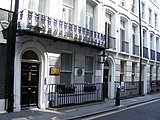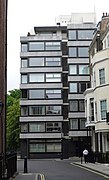
Mayfair is an affluent area in the West End of London towards the eastern edge of Hyde Park, in the City of Westminster, between Oxford Street, Regent Street, Piccadilly and Park Lane. It is one of the most expensive districts in the world.

Pimlico is an area of Central London in the City of Westminster, built as a southern extension to neighbouring Belgravia. It is known for its garden squares and distinctive Regency architecture. Pimlico is demarcated to the north by Victoria Station, by the River Thames to the south, Vauxhall Bridge Road to the east and the former Grosvenor Canal to the west. At its heart is a grid of residential streets laid down by the planner Thomas Cubitt, beginning in 1825 and now protected as the Pimlico Conservation Area. The most prestigious are those on garden squares, with buildings decreasing in grandeur away from St George's Square, Warwick Square, Eccleston Square and the main thoroughfares of Belgrave Road and St. George's Drive. Additions have included the pre–World War II Dolphin Square and the Churchill Gardens and Lillington and Longmoore Gardens estates, now conservation areas in their own right. The area has over 350 Grade II listed buildings and several Grade II* listed churches. At the western edge of Pimlico, on the borders of Chelsea, Pimlico Road has become known in recent years for its interiors and design stores.
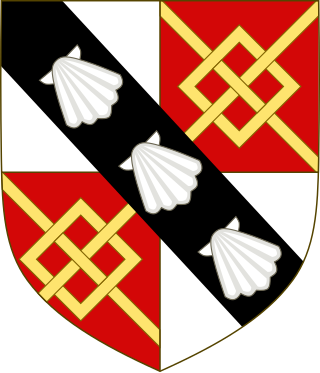
The Spencer family is an aristocratic family in the United Kingdom. From the 16th century, its members have held numerous titles, including the dukedom of Marlborough, the earldoms of Sunderland and Spencer, and the Churchill barony. Two prominent members of the family during the 20th century were Sir Winston Churchill and Diana, Princess of Wales.
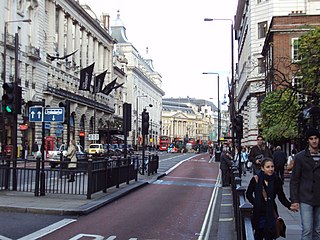
Piccadilly is a road in the City of Westminster, London, England, to the south of Mayfair, between Hyde Park Corner in the west and Piccadilly Circus in the east. It is part of the A4 road that connects central London to Hammersmith, Earl's Court, Heathrow Airport and the M4 motorway westward. St James's is to the south of the eastern section, while the western section is built up only on the northern side. Piccadilly is just under 1 mile (1.6 km) in length, and it is one of the widest and straightest streets in central London.
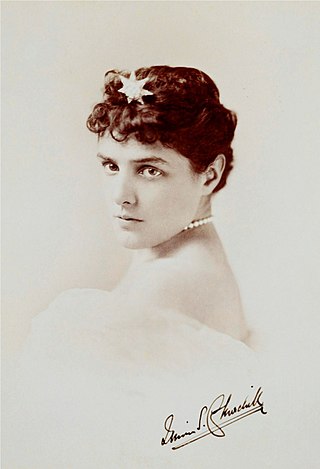
Jeanette"Jennie" Spencer-Churchill, known as Lady Randolph Spencer-Churchill, was an American-born British socialite, the wife of Lord Randolph Churchill, and the mother of British prime minister Sir Winston Churchill.

Wardour Street is a street in Soho, City of Westminster, London. It is a one-way street that runs north from Leicester Square, through Chinatown, across Shaftesbury Avenue to Oxford Street. Throughout the 20th century the West End street became a centre for the British film industry and the popular music scene.

John Winston Spencer-Churchill, 7th Duke of Marlborough,, styled Earl of Sunderland from 1822 to 1840 and Marquess of Blandford from 1840 to 1857, was a British Conservative cabinet minister, politician, peer, and nobleman. He was the paternal grandfather of Prime Minister Sir Winston Churchill.
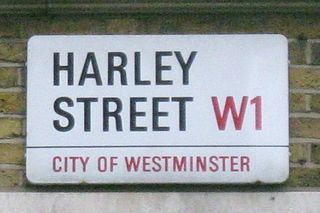
Harley Street is a street in Marylebone, Central London, named after Edward Harley, 2nd Earl of Oxford and Earl Mortimer. Since the 19th century it has housed a large number of private specialists in medicine and surgery.
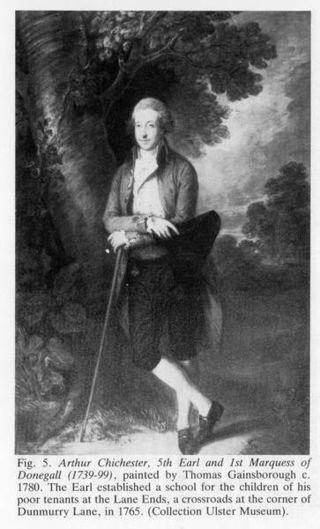
Arthur Chichester, 1st Marquess of Donegall, known as Arthur Chichester until 1757 and as The Earl of Donegall between 1757 and 1791, was an English nobleman and politician in Ireland.

St James's is a central district in the City of Westminster, London, forming part of the West End. The area was once part of the northwestern gardens and parks of St. James's Palace. During the Restoration in the 17th century, the area was developed as a residential location for the British aristocracy, and around the 19th century was the focus of the development of their gentlemen's clubs. Once part of the parish of St Martin in the Fields, much of it formed the parish of St James from 1685 to 1922. Since the Second World War the area has transitioned from residential to commercial use.

Jermyn Street is a one-way street in the St James's area of the City of Westminster in London, England. It is to the south of, parallel, and adjacent to Piccadilly. Jermyn Street is known as a street for gentlemen's-clothing retailers in the West End.

Sir Francis Burdett, 5th Baronet was a British politician and Member of Parliament who gained notoriety as a proponent of universal male suffrage, equal electoral districts, vote by ballot, and annual parliaments. His commitment to reform resulted in legal proceedings and brief confinement to the Tower of London. In his later years he appeared reconciled to the very limited provisions of the 1832 Reform Act. He was the godfather of Francisco Burdett O'Connor, one of the famed Libertadores of the Spanish American wars of independence.

George Charles Spencer-Churchill, 8th Duke of Marlborough, DL, styled Earl of Sunderland until 1857 and Marquess of Blandford between 1857 and 1883, was a British peer.

Francis Wheatley RA was an English portrait and landscape painter.
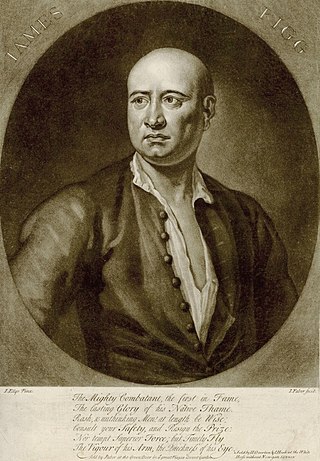
James Figg was an English prizefighter and instructor in historical European martial arts. While Figg primarily fought with weapons including short swords, quarterstaffs, and cudgels, he also played a role in boxing's development. In 1719, he opened a London fighting venue that could seat more than 1,000 spectators and was one of the first of its kind. In 1725, he organised and promoted modern history's first international boxing match at his amphitheatre. He claimed to have won more than 200 matches during his career, and was posthumously considered the first boxing champion.
Boroughbridge was a parliamentary borough in Yorkshire from 1553 until 1832, when it was abolished under the Great Reform Act. Throughout its existence it was represented by two Members of Parliament in the House of Commons.

The St James's Club was a London gentlemen's club which operated between 1857 and 1978. It was founded by two leading diplomats and its members continued to be largely diplomats and authors. It was first established in Charles Street and moved to 106 Piccadilly by 1868. In the final quarter of the twentieth century many gentlemen’s clubs of London suffered from declining membership, and in 1978 the St James's Club merged with Brooks's Club and vacated its premises.
David Barclay was an English Whig politician who sat in the House of Commons variously between 1826 and 1847.
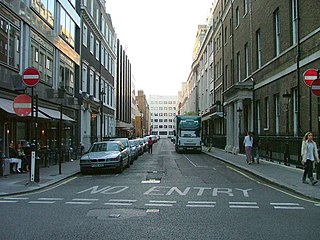
Old Burlington Street is a street in central London that is on land that was once part of the Burlington Estate.
Ralph George Covington Covell was an English modern architect, active during the post-war period to the early 1970s.



